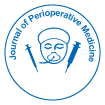
Journal of Perioperative Medicine
Open Access
ISSN: 2684-1290

ISSN: 2684-1290
Commentary - (2025)Volume 8, Issue 1
Enhanced Recovery After Surgery (ERAS) protocols represent one of the most significant advancements in perioperative medicine over the past two decades. Developed with the aim of improving surgical outcomes and streamlining postoperative recovery, ERAS protocols combine evidence based practices spanning preoperative, intraoperative and postoperative care. Originating in colorectal surgery, these protocols have since expanded across multiple surgical specialties, including orthopaedic, urologic, gynaecologic and cardiothoracic procedures. In high-income countries with well-resourced healthcare systems, the implementation of ERAS protocols has been increasingly associated with reduced postoperative complications, shorter hospital stays and improved patient satisfaction.
At the core of ERAS protocols is the recognition that surgical stress both physiological and psychological can be mitigated through a multidisciplinary and standardized approach to care. Key components of ERAS include patient education, preoperative carbohydrate loading, minimization of fasting, avoidance of routine nasogastric tubes, multimodal analgesia to reduce opioid use, early mobilization and early initiation of enteral nutrition. When these strategies are applied cohesively, they reduce the body’s stress response to surgery, accelerate functional recovery and lower the risk of complications.
Numerous studies and meta analyses from high-income countries such as Canada, the United Kingdom, the Netherlands and the United States have provided compelling evidence that ERAS protocols are effective in reducing postoperative complication rates. For example, a systematic review of ERAS implementation in colorectal surgery demonstrated a 30%–40% reduction in complications such as surgical site infections, ileus and thromboembolic events. These improvements are not limited to a single specialty. In orthopaedic surgery, ERAS protocols for total hip and knee arthroplasty have been shown to reduce both minor and major complications while supporting early discharge.
One of the primary mechanisms by which ERAS reduces complications is through opioid-sparing analgesia. Excessive opioid use in the postoperative period is associated with respiratory depression, ileus, nausea and increased risk of dependency. By emphasizing multimodal pain control using regional anaesthesia, NSAIDs, acetaminophen and gabapentinoids, ERAS protocols help minimize these adverse effects while still providing adequate pain relief.
Moreover, early mobilization and early feeding two cornerstones of ERAS play an important role in reducing complications such as pneumonia, deep vein thrombosis and muscle wasting. Traditional postoperative practices often involved prolonged bed rest and delayed reintroduction of oral intake. ERAS challenges these conventions by advocating for patients to be out of bed and walking within hours of surgery and to resume oral intake as early as safely possible. The impact of ERAS extends beyond clinical outcomes to economic benefits. In high income healthcare systems where cost-efficiency is a growing concern, ERAS has demonstrated its value by significantly reducing hospital length of stay without increasing readmission rates. This not only benefits hospital operations and resource allocation but also enhances the patient experience by facilitating a faster return to normal life.
Despite its many advantages, ERAS implementation is not without challenges. Successful adoption requires institutional commitment, interprofessional collaboration and cultural change within surgical teams. Barriers such as clinician resistance, lack of standardized protocols and inadequate training can hinder widespread implementation. In high income countries, these obstacles can be mitigated through structured training programs, ERAS-specific leadership roles and incorporation of ERAS guidelines into national surgical standards.
It is also important to recognize that ERAS protocols must be adapted to specific surgical populations and individual patient characteristics. A one-size-fits-all approach may not be appropriate, particularly for patients with significant comorbidities, frailty, or unique surgical risks. Customization and flexibility, while maintaining fidelity to ERAS principles, are essential to optimizing outcomes.
The implementation of Enhanced Recovery After Surgery protocols has marked a transformative shift in perioperative care. By integrating evidence based practices into a cohesive, multidisciplinary model, ERAS significantly reduces postoperative complication rates across various surgical specialties. In high income countries with the infrastructure to support protocol-driven care, ERAS has not only improved clinical outcomes but also enhanced healthcare efficiency and patient satisfaction.
While challenges to implementation remain, particularly around education and interdisciplinary cooperation, the growing body of evidence supports ERAS as a critical component of modern surgical practice. Moving forward, continued research, innovation and customization of ERAS pathways will be essential to expanding its benefits to even broader patient populations. Ultimately, ERAS protocols represent not just a change in how we manage surgical care but a blueprint for delivering safer, faster and more patient cantered recovery.
Citation: Carter MJ (2025). Impact of Enhanced Recovery After Surgery (ERAS) Protocols on Complication Rates. J Perioper Med. 8:263.
Received: 05-Feb-2025, Manuscript No. JPME-25-37973; Editor assigned: 07-Feb-2025, Pre QC No. JPME-25-37973 (PQ); Reviewed: 22-Feb-2025, QC No. JPME-25-37973; Revised: 02-Mar-2025, Manuscript No. JPME-25-37973 (R); Published: 09-Mar-2025 , DOI: 10.35248/2684-1290.25.8.263
Copyright: © 2025 Carter MJ. This is an open-access article distributed under the terms of the Creative Commons Attribution License, which permits unrestricted use, distribution, and reproduction in any medium, provided the original author and source are credited.